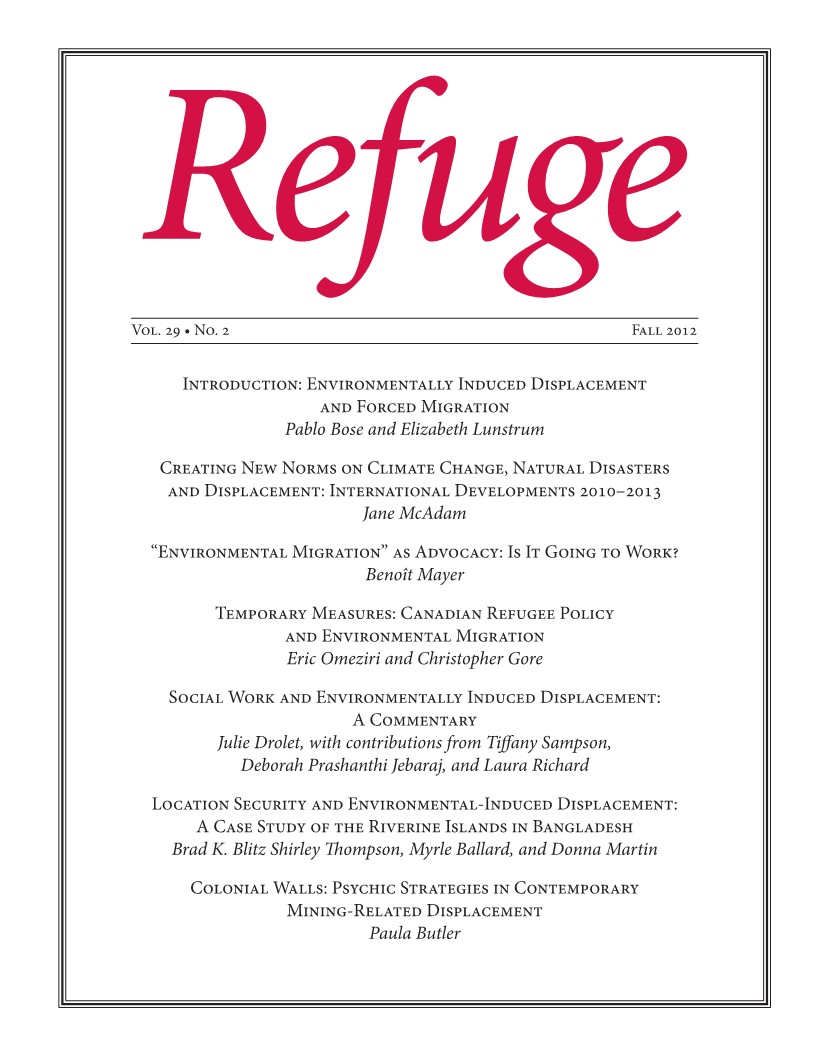Introduction Environmentally Induced Displacement and Forced Migration
DOI :
https://doi.org/10.25071/1920-7336.38163Mots-clés :
EID, environmentally induced displacement, environmental refugeesRésumé
Disappearing coastlines, fields and homes flooded by rising waters, lands left cracked and barren by desertification, a snowpack shrinking in circumpolar regions year by year—these are only a few of the iconic images of climate change that have evoked discussion, debate, and consternation within communities both global and local. Equally alarming has been the threat of what such degraded and destroyed landscapes might mean for those who depend upon them for their livelihoods—as their homes, as their means of sustenance, and as an integral part of their cultural and social lives. A mass of humanity on the move—some suggest 50 million, 150 million, perhaps even a billion people1—the spectre of those forced to flee not as the result of war or conflict but rather a changed environment haunts the imaginaries of national governments, international institutions, and public discourse alike. Are these environmental refugees? Should they be granted the same protections and support as those who can prove their fear of and flight from persecution? Do the sheer numbers contemplated by the scale of the events and factors threaten to overwhelm the international refugee system?
Statistiques
Téléchargements
Publié-e
Comment citer
Numéro
Rubrique
Licence
© Pablo Bose, Elizabeth Lunstrum 2012

Cette œuvre est sous licence Creative Commons Attribution - Pas d'Utilisation Commerciale 4.0 International.
Les auteurs qui publient dans Refuge conservent le droit d’auteur associé à leur œuvre, et octroient au public une licence Creative Commons Attribution - Utilisation non commerciale 4.0 International. La licence permet l’utilisation, la reproduction et l’adaptation du matériel avec attribution par tous moyens et sous tous formats pour des fins non commerciales. Pour des informations générales sur les licences Creative Commons, visitez le site Creative Commons. Pour la licence CC BY-NC 4.0, consultez le résumé lisible par l'homme.







